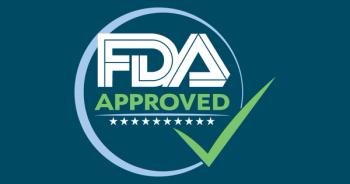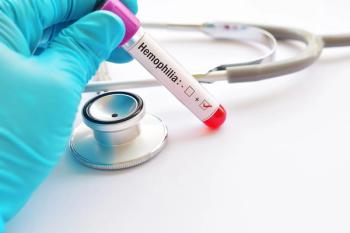
- October 2025
- Volume 41
- Issue 7
Understanding the risks and benefits of current immunization practices
Lori Handy, MD, MSCE, addresses rising vaccine inquiries, emphasizing informed decisions that balance risks and benefits for children's health and safety.
Pediatric care providers across the country are fielding more questions than ever about vaccines. Some arise from parental curiosity, others stem from online content or conversations with friends and family, and others reflect policy changes introduced by the current federal administration.
Providers have an opportunity to meet the moment by helping families make sense of the best scientific data, turning recommendations into collaborative decisions that inspire greater confidence. For this approach to succeed, it is important to acknowledge the known risks and benefits of evidence-based recommendations. This month, we will cover several topics on parents’ minds.
Hepatitis B: Why start the vaccine series at birth?
Hepatitis B (HBV) is a highly contagious virus that can cause a spectrum of conditions and illnesses ranging from mild fatigue and malaise to fulminant liver failure. Most relevant to the discussion of starting the series at birth, however, is that the infection is often asymptomatic. Many people remain unaware of their infection until it is detected on routine screening or once chronic complications—such as cirrhosis or hepatocellular carcinoma—develop.
For children, the asymptomatic nature of HBV infection means they may be exposed through household contacts, daycare settings, or casual community exposures. This virus is resilient: It remains viable on surfaces for days, requires only minute amounts of blood for transmission, and it is often spread by individuals unaware of their infection.
Consider these real-world scenarios
- In daycare, a toddler with undiagnosed hepatitis B crashes into another child on a tricycle. A mouth hits an arm, there’s minor bleeding, and no one realizes there was a blood exposure.
- A friend comes to visit. This person, who does not know they have hepatitis B, showers in your bathroom and leaves a razor out, which may be contaminated with their blood and HBV. Your curious 2-year-old picks it up and cuts themself.
These kinds of exposures are rare, but they happen. Before the universal hepatitis B vaccination was created, approximately 9000 children each year in the United States were newly infected. That number has dropped dramatically following the adoption of the birth dose as routine care.
The birth dose offers critical early protection. Most importantly, it prevents perinatal transmission from mother to infant. Even in cases where maternal screening missed a new infection because it was done early in pregnancy—or where screening was missed altogether—administration of the vaccine within 24 hours of birth, along with hepatitis B immune globulin when indicated, can prevent up to 95% of perinatal transmissions.
What risks should parents be aware of?
The most serious adverse event is anaphylaxis, occurring in approximately 1 per 600,000 doses. Events are rare, occur within minutes, and are treatable—hence the standard practice of postvaccination observation.
Risk-benefit balance: The rare, manageable risk of anaphylaxis is dramatically outweighed by durable protection against household and community exposure that can lead to chronic and potentially fatal HBV infection.
Do children need a COVID-19 primary series?
SARS-CoV-2 has a short incubation period, often just
2 days. By the time the immune system recognizes the virus, it is too late to prevent infection. However, prior immunity (via vaccination or prior infection) enables a rapid T-cell response that curtails progression to severe disease. In practice, immunity does not always prevent infection but markedly reduces hospitalization and mortality.
The primary benefit of COVID-19 vaccination is straightforward: It keeps people out of the emergency department and the hospital. This benefit is particularly relevant for young children. Children who have never been infected or vaccinated are immunologically naive and lack T-cell responses that would prevent progression to severe disease. Of all children eligible for COVID-19 vaccines, hospitalizations remain highest among children aged 6 months to 4 years, and almost all hospitalized children are unvaccinated.
There is no way to predict whether a child will experience a severe outcome. A primary series helps prevent that risk. And as a bonus, vaccination continues to show benefit in reducing the incidence of long COVID.
What risks should parents be aware of?
Vaccine risks are similar to those of other vaccines. Local and systemic reactogenicity (fatigue, headache, myalgias) are common and self-limited. Lymphadenopathy, especially axillary, may occur. The most notable concern is myocarditis, occurring in approximately 1 per 50,000 people vaccinated, particularly male adolescents and young adults. Cases are generally mild and resolve with supportive care.
Risk-benefit balance: Although myocarditis is a real and quantifiable risk, it is far rarer and less severe than the risks of COVID-19 itself—respiratory failure, multisystem inflammatory syndrome in children, or death. As SARS-CoV-2 continues to circulate, children are likely to be infected early in life.
Should parents worry about thimerosal in vaccines?
Thimerosal, an ethylmercury-based preservative, has been used in multidose vaccine vials since the 1930s to prevent bacterial and fungal contamination. Ethylmercury clears rapidly from the body, unlike methylmercury, which accumulates and is neurotoxic at high levels.
Prior to its use, individuals who received vaccines from multidose vials could get a local skin abscess, or worse, a bloodstream infection, due to contamination in the vial and then replication of organisms. Multidose vials help reduce the cost of vaccines and are easier to store and transport.
In 1999, there were calls for removal of thimerosal from vaccines while more data were collected on the impact of ethylmercury. Thimerosal was removed from the majority of vaccines in the United States. Meanwhile, data were reviewed and found to be reassuring. There have been no safety signals in studies comparing people who did vs did not receive a vaccine with thimerosal.
This issue was considered settled. However, it was reintroduced at the June Advisory Committee on Immunization Practices meeting without the typical data review by the CDC. The committee voted to remove thimerosal from the remaining multidose influenza vials used in the United States, throwing thimerosal back into the public conversation about vaccination.
What risks should families be aware of?
Extensive studies have shown no increased risk of neurodevelopmental, allergic, or other adverse outcomes among recipients of thimerosal-containing vaccines compared with those who did not receive them.
Risk-benefit balance: With no demonstrated harms and clear benefits in cost-efficiency, supply stability, and infection control, removal of thimerosal undermines both US and global vaccination programs. Policy shifts without robust evidence risk fueling unnecessary distrust and reducing access to vaccines in vulnerable communities.
Which should I give my child: MMRV vs separate MMR plus varicella vaccines?
Providers can administer measles, mumps, rubella, and varicella vaccines either as 2 injections (MMR and V) or as a combined formulation (MMRV). Both provide equivalent protection against measles, mumps, rubella, and varicella. Three of these viruses are actively circulating in the United States. MMRV reduces injections from 2 to 1, which may improve adherence and reduce procedural distress. Operationally, fewer injections streamline clinic flow and vaccine administration.
What risks should families be aware of?
The key difference lies in febrile seizures. In children aged 12 to 23 months, MMRV doubles the risk relative to separate injections, translating to an excess of 1 seizure per approximately 2500 children. For children aged 4 to 6 years, this difference disappears. Importantly, febrile seizures are frightening but benign, without long-term neurologic consequences.
Risk-benefit balance: For toddlers, risk of febrile seizure is real but transient and clinically inconsequential compared with the protection against measles, mumps, rubella, and varicella—diseases with substantial morbidity. Many providers administer separate vaccines for children aged 12 months and the combined vaccine for those aged 4 to 6 years, a reasonable balance that can be individualized based on parental preference.
Do we need aluminum adjuvants in vaccines?
Aluminum salts have been used as vaccine adjuvants for nearly a century. They enhance immunogenicity by creating a depot effect—slowing antigen release—and improving uptake by antigen-presenting cells. This allows for fewer doses and reduced antigen content. This enhances both individual protection and programmatic efficiency.
What risks should families be aware of?
The most common adverse effects due to aluminum adjuvants are local reactions (eg, erythema, swelling, tenderness). Systemic risks are minimal. Peak aluminum levels after vaccination are lower than those routinely ingested through diet or infant formula.
Risk-benefit balance: Episodic aluminum exposure via vaccines is negligible compared with daily environmental intake. The immunologic benefit far exceeds the minimal, theoretical risks.
Final thoughts
Having conversations about vaccines with families requires balance, acknowledging real but rare risks while clearly articulating the profound benefits of immunization. Using a consistent risk-benefit framework not only builds trust but also equips us, as providers, to guide families through complex decisions with confidence and clarity.
Articles in this issue
about 1 month ago
Screening for suicide ideation and suicide attempts is a priorityabout 2 months ago
Letter from the editor, October 20252 months ago
5-week-old with blood under the tongue2 months ago
Vaccines remain the cornerstone of child health2 months ago
Physicians give AI scribes a thumbs-upNewsletter
Access practical, evidence-based guidance to support better care for our youngest patients. Join our email list for the latest clinical updates.










